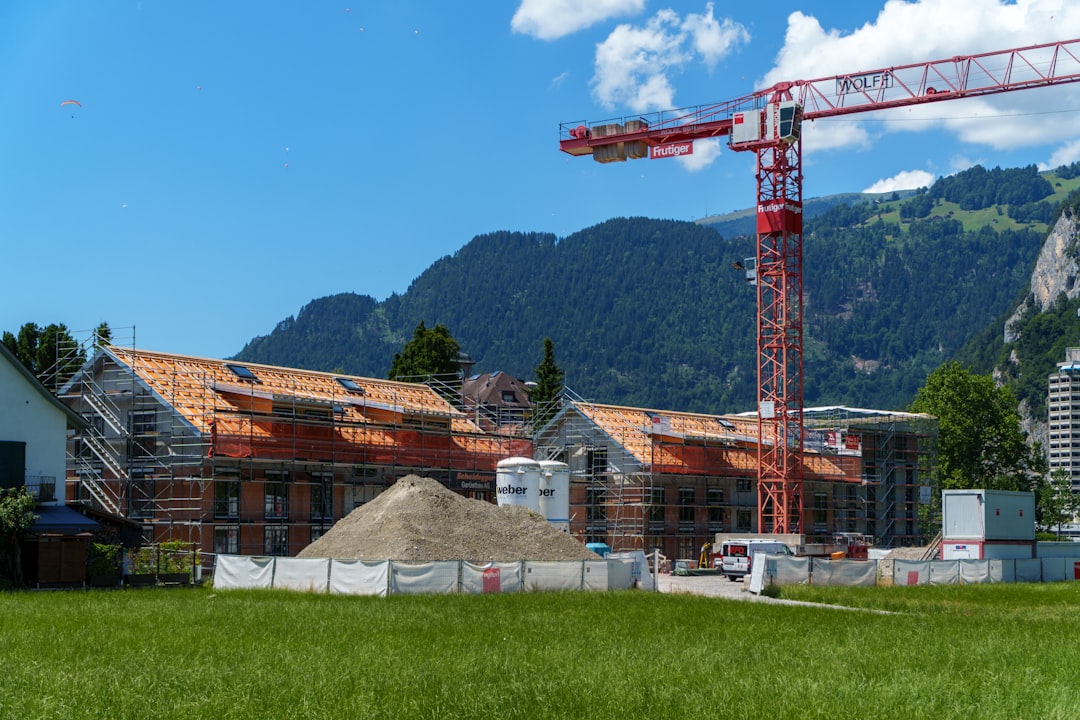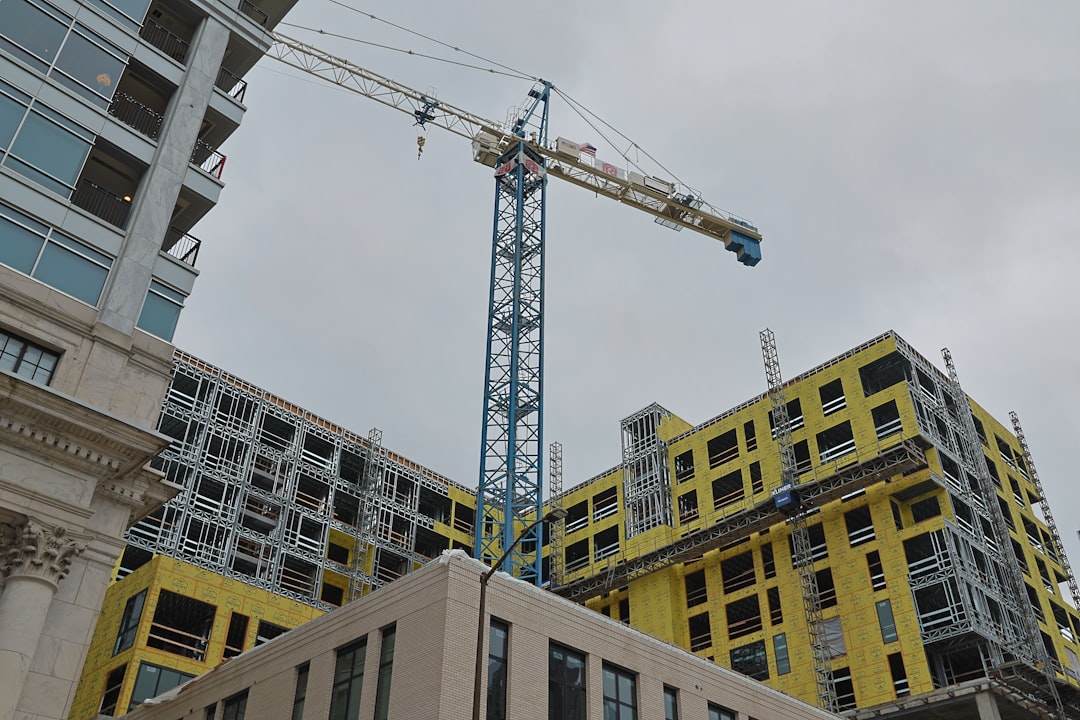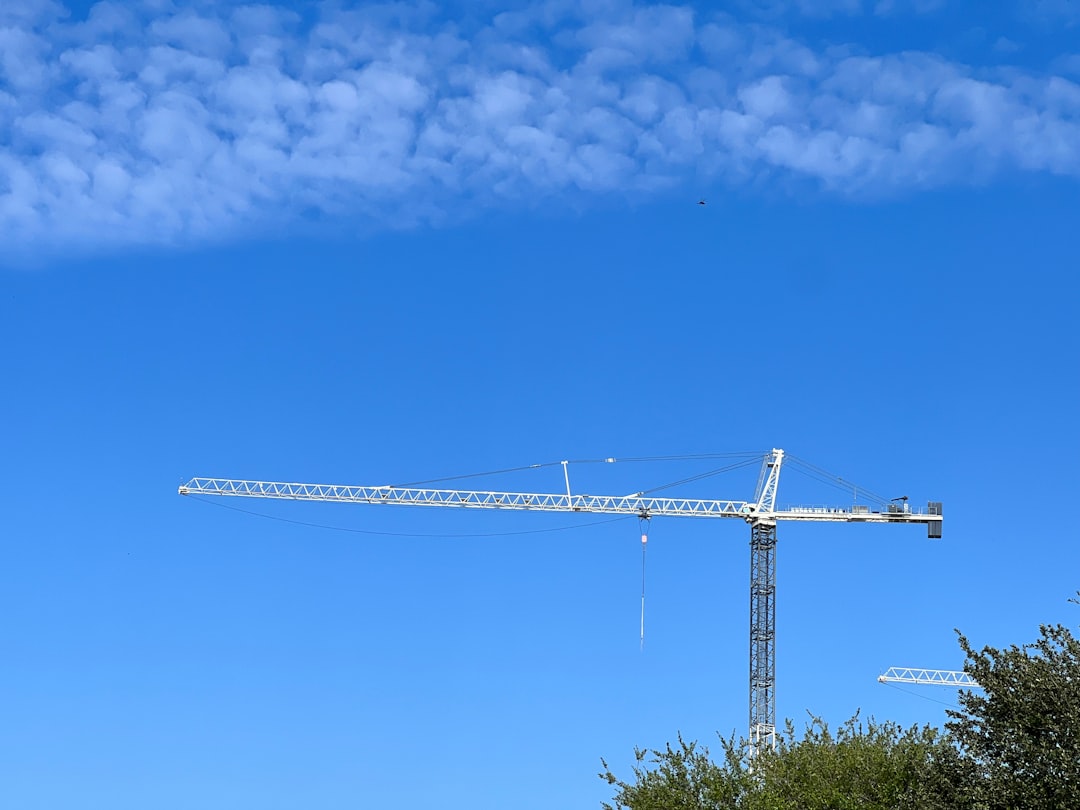

Engage prospects with a scan and streamline customer engagement with FREE QR code marketing tools by Sona – no strings attached!
Create a Free QR CodeFree consultation

No commitment

Engage prospects with a scan and streamline customer engagement with FREE QR code marketing tools by Sona – no strings attached!
Create a Free QR CodeFree consultation

No commitment
Foundation contracting businesses face a persistent struggle: capturing high-value prospects and keeping track of customer journeys in a rapidly digitizing market. Property owners and commercial stakeholders often research contractors, visit project sites, or engage with marketing materials, but these interactions frequently go untracked, slipping through the cracks of outdated systems. This leads to lost opportunities, unfulfilled project pipelines, and increased complexity for teams juggling physical assets and compliance documentation.
QR codes are emerging as an accessible, low-friction tool for foundation contractors seeking to resolve these challenges. When strategically deployed, they provide a direct digital connection to prospects and clients: from instant access to service documentation, to streamlined lead capture on job sites, to real-time verification at every project milestone. This innovation is about more than efficiency; it enables contractors to recognize genuine intent signals and prioritize opportunities with the highest potential return.
This guide delivers practical steps for leveraging QR code technology in real-world conditions. By embedding codes at customer touchpoints and integrating insights with back-end systems, contractors can close operational gaps and drive measurable results. For broader strategy, explore QR marketing. The focus is on effective implementation and understanding why QR codes matter for future-ready businesses.

Traditional project workflows often rely on paper documentation, manual safety checklists, and disconnected processes for lead capture, which means valuable information gets lost and follow-ups arrive too late. Contractors frequently discover that qualified prospects interacted with their brand via a brochure or on-site signage but never made it into the CRM. That single disconnect can mean a missed opportunity and a stalled pipeline. QR codes bridge the physical-to-digital divide, making it possible to capture and engage with these otherwise invisible audiences while giving field teams an easy way to retrieve or submit information in the moment.
Start by mapping your offline journey. Identify where property owners, inspectors, and general contractors already touch your materials or equipment. Replace analog friction points with QR-powered experiences that remove steps, reduce errors, and guide people right to the next best action. When every scan routes to a relevant destination and is tracked, you convert scattered attention into measurable demand and operational clarity.
By organizing QR code deployment through a unified platform, contractors ensure that every interaction is tracked, actionable, and attributable. The result is a shift from analog inefficiencies to digital outcomes that improve lead quality, shorten response times, and simplify oversight across crews and sites.

Foundation work involves complex coordination: field documentation, safety verification, engineer approvals, homeowner communications, and compliance reviews often occur across different formats and systems. In that environment, missing a single handoff can delay a pour, a pier install, or an inspection. At the same time, prospects who see your yard signs or flyers rarely take the extra step of typing a URL or calling a number, so their interest stays invisible. QR codes reduce this friction by transforming every physical touchpoint into an immediate digital action that can be measured and optimized, including proven uses in construction.
Adoption is easy because QR codes do not require app downloads or complex instructions. A single scan can open a job checklist, request an estimate, confirm a site visit, or pull up a project plan. Dynamic QR codes let you update destinations without reprinting, which is especially valuable for long-running projects or recurring marketing assets. The impact shows up across sales, operations, and client experience.
For foundation contractors, QR codes build a reliable path from awareness to action. They turn unmeasured attention into measurable outcomes while giving field teams and customers fast, frustration-free access to what they need.

Contractors routinely deal with process gaps that cause delays, miscommunications, and lost opportunities. Choosing the right QR code format ensures that each scan delivers the intended action with minimal steps and maximum clarity. Mix and match formats to match the context and expected outcome at each touchpoint.
Dynamic QR codes are particularly useful in foundation work where details change as sites progress. Use dynamic codes for marketing assets, multi-phase documentation, and any workflow that benefits from live analytics and on-the-fly updates. Use static codes for permanent assets like durable equipment labels or fixed safety protocols that rarely change.

Foundation contractors often invest in many touchpoints that generate awareness but not attributable action. Yard signs, fleet wraps, community mailers, and jobsite boards can spark interest, yet the journey stalls if prospects lack a clear path to act. QR codes installed at the right places make each material measurable and actionable, giving you a direct line from offline exposure to a digital handshake.
Focus on the environments your buyers already traverse. Homeowners notice yard signs and mailers; facility managers see equipment labels and safety boards; general contractors interact with proposals and invoices. Curate QR destinations that match each context, then monitor performance to prioritize investments that consistently produce high-intent engagement.
By aligning QR placement with typical buyer journeys and field workflows, you not only capture more leads but also learn which messages, channels, and areas produce the best returns. Over time, the data tells you where to scale, where to refine, and where to stop spending.

Successful QR deployments in foundation contracting share a common trait: they remove friction from moments that matter. Whether you are coordinating with an engineer, guiding a homeowner, or training a crew, a scan should open the most relevant digital resource without wasted steps. Design each use case around a clear action and outcome.
Additional scenarios complement these core cases. Use QR codes to drive estimate requests from yard signs, onboard new subcontractors with training modules, or document daily progress with photo galleries tied to specific work orders. Each scan adds context to your CRM, building a more complete view of buyer behavior and project execution.
Every scan carries intent. A homeowner scanning a yard sign is not the same as a property manager scanning a service checklist, and neither is identical to an engineer pulling up a soil report. Segmenting by context lets you tailor follow-up and retargeting to what each audience needs next. The payoff is stronger response rates, better sales prioritization, and less wasted outreach.
Start by designing codes for key lifecycle moments. Awareness scans might go to before-and-after galleries; consideration scans to pricing, warranty details, or case studies; conversion scans to deposit links or scheduling portals. Tag audiences automatically as they move through the funnel and sync those segments to your CRM and ad platforms.
For foundation contracting specifically, consider audience distinctions such as homeowners versus property managers, general contractors versus architects, and urgent repairs versus planned upgrades. This level of segmentation ensures your follow-up focuses on the right service mix, budget level, and decision timeline.
Disconnected campaigns and inconsistent messaging create confusion for buyers and inefficiencies for teams. QR codes help unify your channels by turning static materials into interactive gateways that keep the journey moving. They also standardize data collection across touchpoints that were previously impossible to measure.
When you embed QR codes into each channel with a clear call to action, you reduce friction and gather comparable analytics across print, site materials, events, and advertising. A centralized platform such as Sona QR lets you manage all codes, monitor performance, and integrate scan data with your CRM so that every campaign is connected end to end.
QR codes serve as the offline onramp to your digital marketing engine. They also unlock a new layer of data across channels that were once difficult to measure. With Sona QR, you can manage all your codes in one place, monitor performance, and sync scan data with your CRM and ad platforms to create a truly connected buyer journey.
Campaigns often falter because of execution details: unclear goals, untested codes, poor placement, or missing attribution. A structured process helps contractors avoid those pitfalls and turn concepts into measurable wins. Use the following checklist to plan, deploy, and optimize your next initiative with confidence.
Before you begin, choose one primary outcome, such as increasing estimate requests from yard signs or verifying crew safety training with fewer manual steps. Then select placements that match where your audience already interacts with your brand, and define how you will measure success over the first 30 to 90 days.
Offline marketing has long suffered from weak attribution. Yard signs, flyers, and fleet branding create awareness, but tying those exposures to contracts has been guesswork. QR codes change that equation by making every interaction measurable. For measurement strategy, see Sona’s guide to offline attribution. When you pair code-level data with CRM outcomes, you can connect scans to pipeline and revenue, then optimize investments with confidence.
The analytics journey should not stop at the scan. You need to know which codes lead to form fills, which placements generate qualified conversations, and which sequences of touchpoints correlate with closed business. Platforms like Sona QR and Sona.com help you capture scans, enrich contacts, and attribute revenue across the entire journey.
Over several campaign cycles, you will develop benchmarks such as scan volume per sign, scan-to-lead rate from invoices, or time from scan to booked inspection. Those metrics guide budget allocation, staffing, and creative decisions, ensuring your QR investments translate into measurable business growth.
Keeping campaigns cohesive and measurable in a field-heavy operation requires focus and discipline. The following tips are tailored to foundation contractors and emphasize the physical media and workflows common in the trade. Adopt the practices that align with your goals and environment.
For creative deployment, consider QR decals on helmets that open a mobile safety checklist, or neighborhood-facing site banners that route to a gallery of similar local projects. On invoices, include a code for digital payment and a second code for a referral program that rewards clients for sharing your work with neighbors.
In an era when one missed interaction or overlooked inquiry can mean significant lost revenue, foundation contractors need more than incremental change. QR codes have moved from novelty to necessity, offering a practical way to bring every customer engagement out of the shadows and into actionable insight. By integrating these tools throughout physical and digital workflows, contractors can finally connect the dots from first impression to project closeout, reducing cycle time and elevating the client experience.
Foundation contracting businesses face increasing complexity in capturing prospects, verifying service completion, and maintaining operational coherence while competing for attention in crowded markets. With thoughtful QR integration, you can eliminate manual blind spots, surface hidden intent signals, and ensure that every interaction leads to measurable impact. Sona QR gives you the toolkit to generate, manage, and track codes at scale, while Sona.com links scans to pipeline and revenue for true performance visibility.
The path forward is clear. Start with one or two high-impact use cases, such as estimate requests from yard signs and digital approvals from proposals. Build your segments and analytics foundation early so you can learn, iterate, and grow. With a few well-placed codes and a commitment to measurement, foundation contractors can turn everyday touchpoints into a reliable engine for growth. Start creating QR codes for free.
QR codes have revolutionized foundation contracting businesses by turning traditional project management and client communications into seamless, interactive experiences. From streamlining access to project details and safety protocols to enhancing client engagement and accelerating approvals, QR codes enable faster, more transparent workflows that drive efficiency and customer satisfaction. Imagine instantly sharing up-to-date project specs or maintenance guides with clients and subcontractors—all through a simple scan.
With Sona QR, you can create dynamic, trackable QR codes tailored for your foundation contracting needs, allowing real-time updates without costly reprints and linking every scan to actionable insights. This means no missed communications, clearer accountability, and a direct line from engagement to project success. Start for free with Sona QR today and transform every scan into a gateway for smoother operations and stronger client relationships.
QR codes bridge the gap between physical and digital interactions, enabling foundation contractors to capture high-value prospects, streamline documentation access, verify service completion, and gain measurable insights that improve lead quality and operational efficiency.
By placing QR codes on signage, brochures, job site materials, and marketing collateral, contractors provide instant digital access to estimates, project updates, and contact details, making it easier for customers to interact and respond promptly.
QR codes on equipment labels and safety boards offer instant access to certified checklists, maintenance records, and compliance documents, enabling crews and inspectors to verify safety and service status quickly and accurately.
Contractors can use QR codes on yard signs to trigger estimate requests, on fleet vehicles and billboards for location-specific landing pages, on direct mailers for neighborhood-targeted offers, and on trade show materials to capture and segment leads by buyer type.
By integrating QR codes with CRM and marketing platforms, contractors can track scan data, segment audiences by behavior and location, automate follow-ups, and unify offline and online campaigns to create connected, measurable customer journeys.
Use Sona QR's trackable codes to improve customer acquisition and engagement today.
Create Your FREE Trackable QR Code in SecondsJoin results-focused teams combining Sona Platform automation with advanced Google Ads strategies to scale lead generation

Connect your existing CRM

Free Account Enrichment

No setup fees
No commitment required

Free consultation

Get a custom Google Ads roadmap for your business






Launch campaigns that generate qualified leads in 30 days or less.
